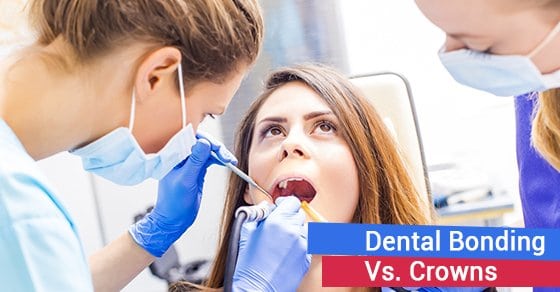Many people will experience a chipped tooth, or teeth, in their lifetime. Chipped teeth can be caused by many different kinds of accidents, but usually result from some sort of force to the tooth, such as from a fall or biting into something hard. Fortunately, chipped teeth are relatively easy to fix, and there are many restorative options, including fillings, veneers, bonding, and crowns.
In this article, we’ll look at the difference between dental bonding and dental crowns, two procedures that repair the appearance and function of damaged teeth. If you have a chipped or otherwise damaged tooth, it’s important that you see your dentist as soon as possible as they will be able to recommend the best procedure for you.
Bonding
Dental bonding refers to attaching dental material to your damaged tooth using adhesives and a high-intensity light. There are two types of dental bonding:
- Direct composite bonding: This is a quick fix for minor tooth chips and cracks during which material adheres to your teeth in order to fill in the crack or chip. Direct composite bonding usually takes place in just one visit.
- Adhesive bonding: Adhesive bonding is used to attach veneers, crowns, bridges, inlays, etc., to your teeth. In this case, the bonding works as the glue itself, keeping the restorative material in place.
Dental bonding is a relatively painless and non-invasive procedure. You may feel some sensitivity in the area directly following the procedure, but it shouldn’t last long. However, bonding materials can be more sensitive and prone to breaking or chipping than the tooth itself, so you should be careful and avoid chewing on any hard objects such as ice, pens, fingernails, etc.
Crowns
Crowns are also known as “caps” and restore function and appearance to damaged teeth. Like bonding, crowns are most commonly used to fix cracked or chipped teeth, but they can also be used to restore the tooth when large fillings are present.
A crown is custom designed, usually made of porcelain, ceramic, or gold. It fits over the damaged tooth to restore and protect your natural tooth. The procedure takes longer than bonding as you may need 2 visits. One to prepare and take a mold of the tooth and a second to place the finished crown.
If you are unsure about needing bonding or a crown put in, the best way to determine which is suitable for your needs is to ask your dentist!
